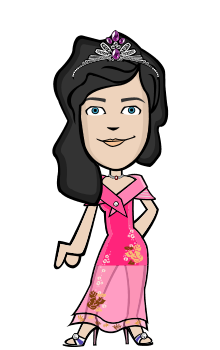Video credits: Jean Beltran-Figues via bitLanders.com
A local cyclist hurriedly stepped into his bicycle as the rain started showering the town of Boljoon with cold and strong rain. I on the other hand went from the end of the parish church towards the convent area, looking for James. He emerged from the other side and was trying to take the few raindrops from his camera, a Panasonic GX85.
Some local church loyals and vendors were sitting at the convent' s doorway, I asked to myself if they'd allow us to come in and they nodded. There I found a foreigner perhaps from the US by the way he talks was being massaged by an elderly woman, she was doing the traditional "hilot".
I found a wooden staircase inside but there's a sign which states off limits to visitors. I had to stay back and look for other interesting find. I walked few steps and found a door with metal stands. Boljoon Parish Museum.
Video credits: Jean Beltran-Figues via bitLanders.com
The rain somehow made a way for us to find this spot. If it was not for the rain, I wouldn't find out that there is a museum at the ground floor of the convent building.
The elderly whom I asked earlier if we cab come in asked me if we would like to come inside and I enthusiastically replied yes. I immediately called James and he complied.
○ BOLJOON PARISH MUSEUM ○
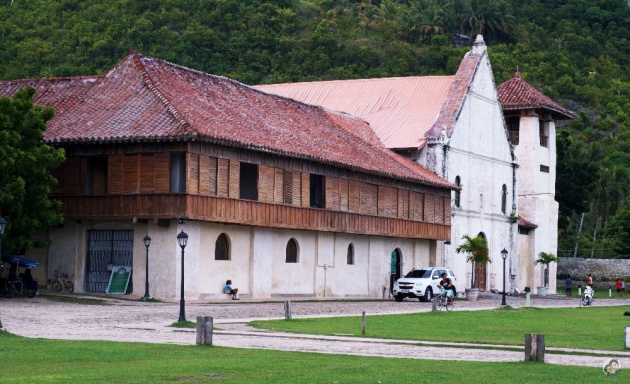
Image credits: Jean Beltran-Figues via bitLanders.com
An entrance fee of Php 30 is required, two other tourists from the North, Tagalog-speaking ones were also interested so four of us went inside with the cashier slash tour guide herself, she didn't introduce herself though but I felt like she was in a hurry during the entire tour, we only get to talk about certain parts of the museum, she didn't elaborate on the important items and she didn't deal with all the things inside, we went in around 30 minutes past four in the afternoon and got out at 15 minutes past five.
But although that was a short tour, I definitely had learned some information about how the ancient people of Boljoon lived. The stories here were relatable to the stories I found at the Sugbo Museum which we also visited few weeks ago.
○ MUSEUM OF THREE GALLERIES ○
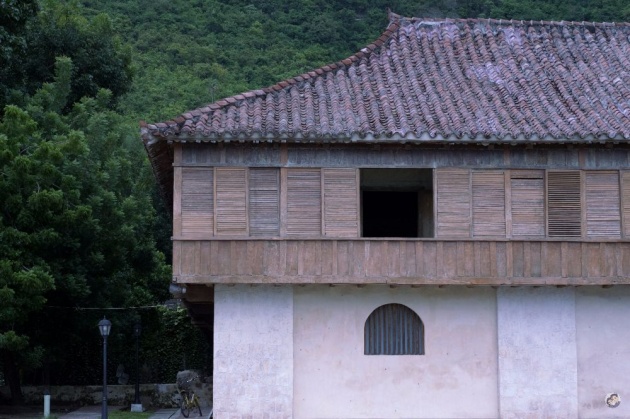
Image credits: Jean Beltran-Figues via bitLanders.com
What I thought as a small museum turned to be bigger than what I originally imagined. I did mention on my previous blog that three church convent was built in an L shape and the museum follows the same as it is at the ground floor.
There are three galleries inside but looking outside, the stuffs inside were a bit scary though I shall I say frightening. It felt like we were going inside a terror booth.
1. Liturgical Items
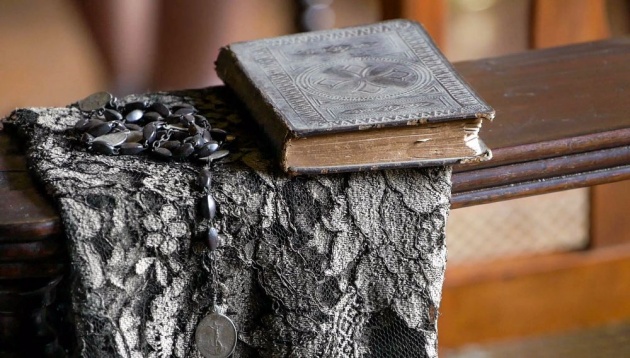
Image credits: Jean Beltran-Figues via bitLanders.com
How do you find the sound of metal locks? It somehow felt like I was about to enter the prison cell of Queen Cersei in the past season scenes of Game of Thrones. The braking of iron doors added effect too.
At last we were all inside and I could sense old items, the smell of rustic relics and the effect it creates to the place. The tour guide closed the doors too to ensure no one comes in while we were still inside.
In this first part of the museum lies the liturgical items used by the first parish priests of the town. There were gowns with gold threads in them which were displayed inside glass made cabinets.
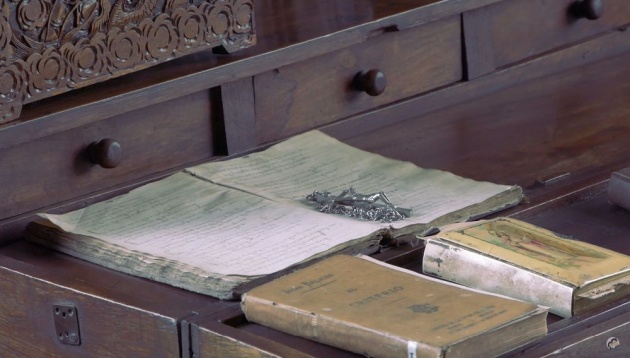
Image credits: Jean Beltran-Figues via bitLanders.com
No picture taking! Our tour guide exclaimed making sure no one takes out our camera gears. I had to put it back in its bag instead and took out my Samsung phone so I could take notes of the information while the tour guide was speaking fast.
Remember these mini canons we found at Casa Gorordo? They also have it here but unlike that in Casa Gorordo, there were only a few of them there in Boljoon Museum perhaps because the priest who lived in Casa Gorordo was actually a bishop.

Image credits: wikimedia.org
Some items used by the priests during massed can be spotted too like the chalice, communion cups, paten and vests too. I can't help but notice that most of these items have been plated with gold.
2. Tabernacles
We came to the next part which still holds more items belonging to the previous parish priests. This place has the different chairs of the Augustinian priests for different occasions such as for their birthdays and other celebrations. They do use a separate and special chair for the birthday celebrant.
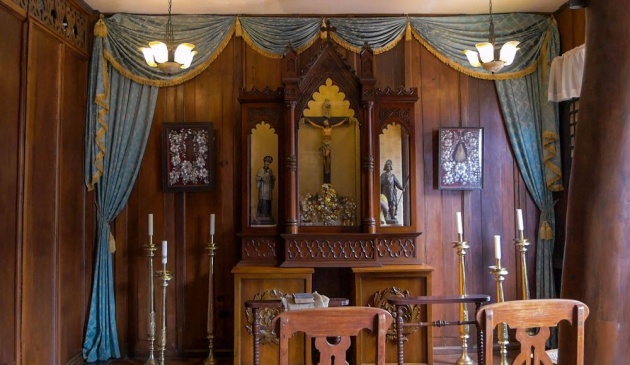
Image credits: Jean Beltran-Figues via bitLanders.com
Other finds were statues in pure ivory. An old wooden image of Santo Tomas de Villanueva is also present there but there are already deformities in it. However, it
is one of the three remaining original wooden sculptures of the saint in the country.
There were also huge cabinets safely secured there which as per the tour guide was where the priests would store their different robes and vests used during mass.
3. Excavated Items
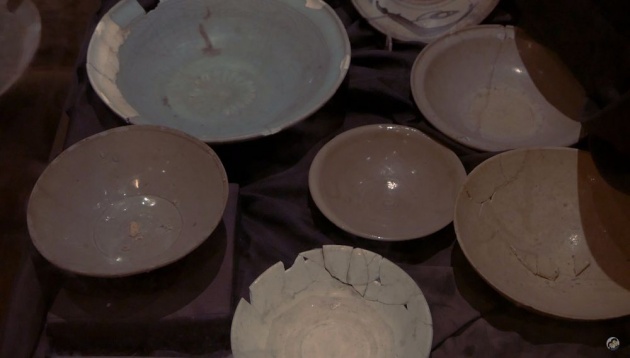
Image credits: Jean Beltran-Figues via bitLanders.com
At the third gallery section lies a lot about the history of the town and how the ancient people residing here lived. It was a surprise that we spotted gold necklaces and earrings there, later we found out that they were owned by the excavated humans just right in front of the church.
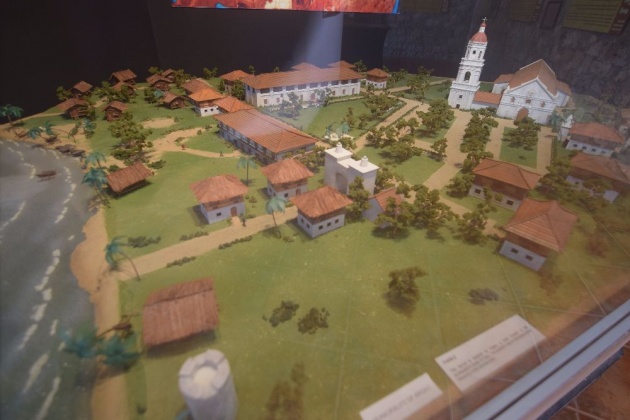
Image credits: Jean Beltran-Figues via bitLanders.com
On the year 2007 up until 2011, an excavation was performed to find out what and how the old Boljoanons were living before since there were no specific documentation about them after the Spaniards took over the town.
There they found burials of prominent locals with specific "pabaons" with them. With the excavation, they found that there were ancient people living right in front of the church.
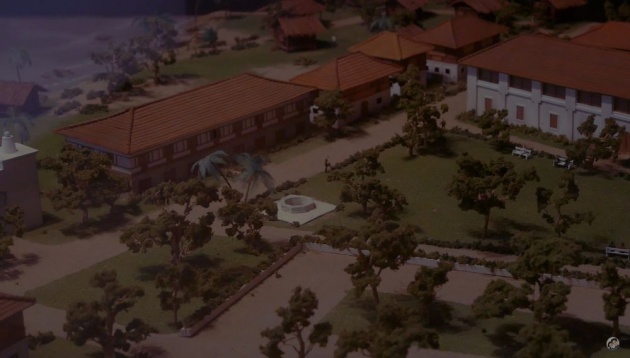
Image credits: Jean Beltran-Figues via bitLanders.com
As per history, ancients would bury their dead just near to their household. Japanese ceramics were recovered too, some of these ceramics were used to.cover the faces of the dead to avoid contact with the soil.
One of the jewelries found was a 18-24 Karats, 1.1 m long, female and was of 40-60 yrs old when she was buried. The gold embroideries found in some of the items excavated made an impression that these people were of prominent families, rich ones in short while there were also ones with tattoos, considered as the warriors.
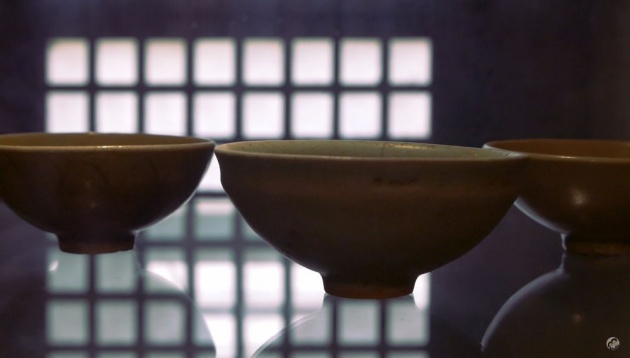
Image credits: Jean Beltran-Figues via bitLanders.com
More items which represented how the first people in Boljoon lived were found in the area. It was also a mystery how these notable items arrived in Boljoon when it is located far south of the island of Cebu however, they did also considered the inter island trading which had been the main component of items arriving from this province or island to another.
Blog entry written and published by Jean Beltran-Figues, A Pinas traveler and photography hobbyist, find more travel blogs in my blog section, click here.

